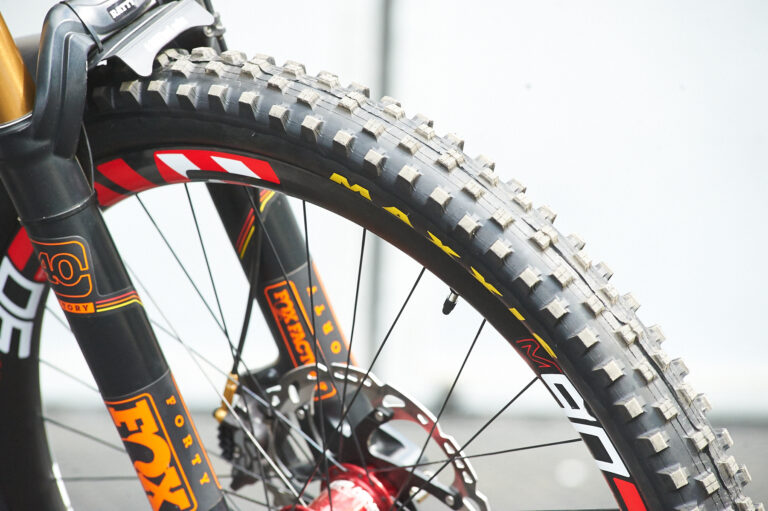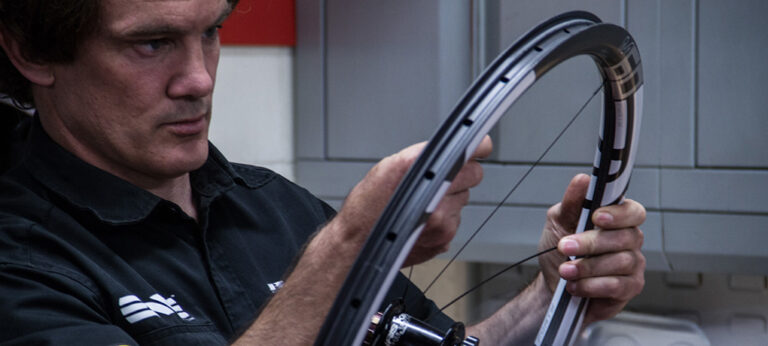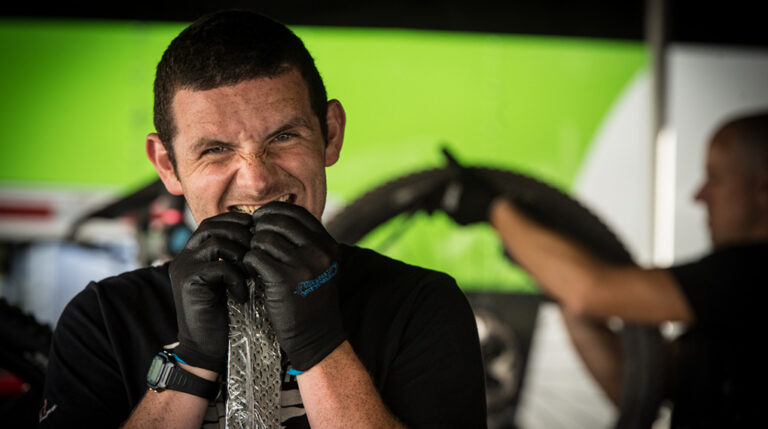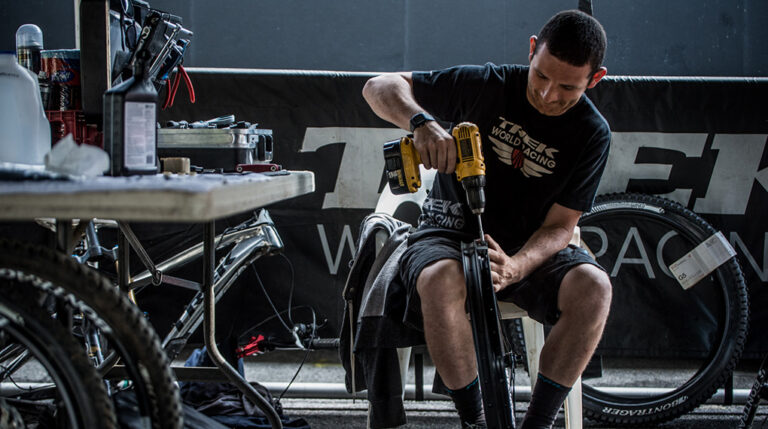
Tyre profiles
There are two general types of tyre profile: rounded and square. Rounded profiles normally offer less rolling resistance so are better for going quickly, but they offer less grip as less of the tyre is in contact with the ground. Less grip is available while cornering too, as the tread patterns on the outside of the tyre normally the same as the centre sections.
A square profile normally supports a more aggressive tread pattern offering plenty of grip but with the disadvantage of higher rolling resistance, especially on smooth, hard packed surfaces. There’s usually plenty of cornering grip on offer as the more aggressive tread pattern bites into the terrain. The combination of speed and grip comes at a price, though.
Tyre manufacturers have been working hard on improving the all-round performance of cross-country tyres. More and more tyres are appearing built of two, sometimes three different layers of tread compound. The mix of harder and softer compounds enables tyres to roll and corner better, giving you the best of both worlds for a wider range of riding conditions.
Grip, braking, inertia & rolling resistance
The wheels and tyres on your mountain bike are the components that have to be turned, so it’s only natural to want this to happen as easily as possible. But here’s the problem: we want maximum grip combined with a light wheel/tyre combination that’s easy to rotate, especially when the going gets tough.
We need grip to stay upright and to propel ourselves forwards when it’s slippery, and we need the tyre to grip in the opposite direction for maximum braking effect. Fitting those new disc brakes will amount to nothing if there’s nothing to bite into the ground.
The lighter the tyre, the lower its inertia and the easier it is to turn the wheel. Lightweight tyres tend to have thinner side walls to reduce this, which is great for weight saving but not so good for preventing pinch flats.
Rolling resistance is the force needed to actually push the tyre along the ground. Tyres with minimal tread blocks have low rolling resistance, so will be quicker over hard packed ground than a more aggressive tread pattern but usually don’t offer much grip on loose surfaces. This becomes a problem when you hit soft or muddy conditions where the tyre can’t dig in and provide grip. That’s not a disaster for a few metres, but you will soon get fed up with the lack of grip if your frequently ride though mud or soft, wet ground.
The ultimate in low rolling resistance is the slick road tyre, but they’re not much use off-road unless you are riding clean, dry rocks.
Tyre manufacturers have to trade off these four attributes as it’s impossible to make a tyre that is light, grippy in all situations and fast-rolling.
Mud shedding
A tyre with an open tread pattern, with large gaps between the blocks, will cut through the mud and normally clear it easier than a close block pattern.
This is because the mud has little purchase as there are fewer blocks of rubber to get packed between, and the blocks tend to give a little (that squishy feeling) allowing the mud to fall out. Good mud tyres usually have blocks with sloping sides to help drop the dirt.





